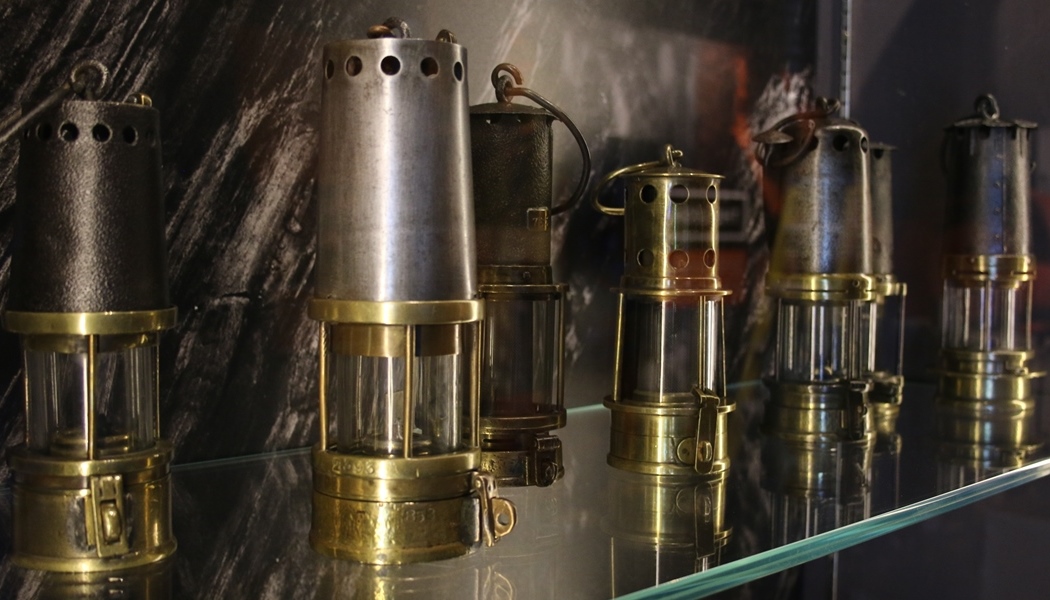Voices in the Coalshed: Davy Lamp

If I asked you to tell me what you think is the most powerful symbol of the mining industry what would you say? A pit wheel turning? Men with grimy faces? Or would it be, like me, a miner’s lamp?
The miner’s lamp is an evocative symbol, representing many aspects of mining including danger and safety in equal measure.
The lamp you probably picture in your head is a flame safety lamp, a far cry from the original lamps developed in the early eighteen hundreds.
Prior to this time, miners worked by candlelight, adding a further danger to what was already a dangerous occupation. The naked flame would ignite the deadly gases seeping from the coal seams causing explosions which killed and maimed many.
Following one such explosion in 1812 at Felling Colliery which saw the deaths of 92 men and boys, it was decided that something must be done to deal with the explosive firedamp (methane) which built up in the mines. In 1813 The Society for Preventing Accidents in Coal Mines was formed (known also as the Sunderland Society). Although they did not achieve what they had set out to do, they did conclude that it was science which would be able to provide a solution to the problem and that Sir Humphry Davy, one of the foremost scientists of the time would be their man.
Their first attempt was unsuccessful but following a meeting in July 1815, a second attempt was made by the Rector of Bishopwearmouth, Robert Grey, which generated a reply from the great man dated August 3rd.
On the 9th of October 1815, Davy, assisted by lab technician Michael Faraday, began work.
It was not a straightforward task. He was seeking to somehow allow light from a flame to pass out without igniting the gases present in the air, to somehow lower the temperature of the flame and thereby prevent explosions.
Within a few weeks he felt that he had a solution to the problem and a paper was prepared to be read to the Royal Society. This never happened however as Davy continued work on the problem and came up with what he called a “fire sieve”, a series of metal rectangles or cylinders which would absorb the heat from the flame. From there he realised that a metal gauze or mesh would be even more effective. He had, he said, “confine(d) this destructive element flame like a bird in a cage.”
Davy sent five of his lamps to the North East where they were tested on the 9th January 1816 at Hebburn Colliery. Rector John Hodgson, in whose parish Felling Colliery lay, was one of the men to test these lamps.
Although other men of science were involved in the development of these lamps, it is Davy whose name has become synonymous with them and the lamp remains known, far and wide, as the Davy Lamp.
This blog is written by Volunteer Nicola
Sources: http://www.mineaccidents.com.au/mine-event/231/1815-flame-safety-lamp
The life-saving lamp: Humphry Davy’s fight against firedamp | Royal Institution